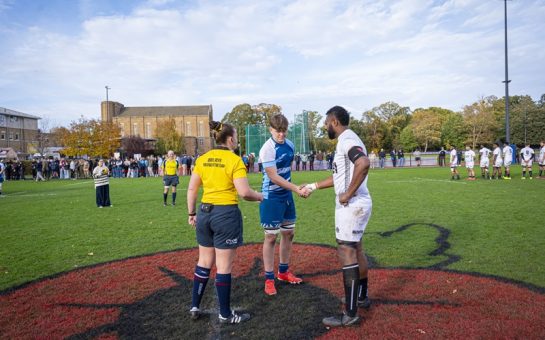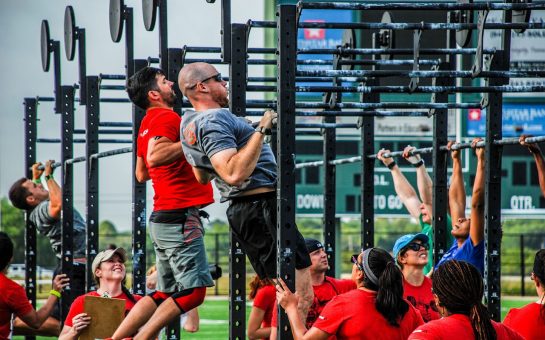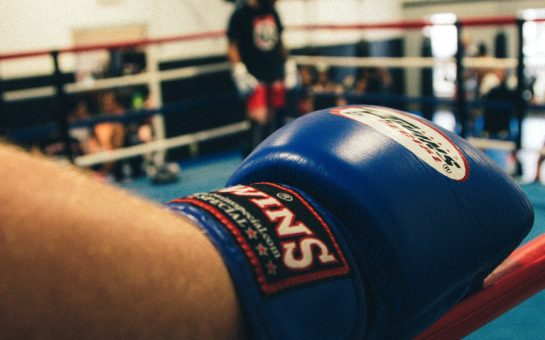Gwyn Wright
Friday 17 January, 19.45
Follow @SW_Londoner
Some people just can’t deal with the idea of female bodybuilders.
Dr Tanya Bunsell, who has just started a new job researching female bodybuilding at the University of Bath after nearly seven years at St Mary’s University Twickenham, can list some of the most common tropes.
They include ‘grotesque’, ‘fake’, ‘freak’, ‘narcissistic’, ‘pornographic’ and ‘scary’.
In the face of such prejudice, Dr Bunsell wanted to know why they pump iron and what they get from it.
The only way she felt she could do this was by becoming a female bodybuilder for nearly two years.
She was at a ballet class when she first saw a female bodybuilder at the age of seven.
She said: “I looked up and saw a woman doing a gymnastics routine on a muted television screen.
“I was awestruck, not so much by the routine, but by the combination of her skills and her appearance.
“Even at that young age I was drawn to and fascinated by a woman so apparently possessed of herself.’’
She started training at 15 and became a qualified gym instructor at 18, but broke her neck doing 100kg squats shortly after, an experience which led her to question ‘both the power and restrictions of this lifestyle’.
She didn’t return to heavy weightlifting until she started her research nine years later.
Two years in the life of a female bodybuilder meant waking up at 5am every day for training, working backstage at competitions, including the British finals, strict dieting and dealing with the ‘normal’ shaking and nausea that go with such intense workouts.
The bodybuilders she worked with were drawn in for a whole host of reasons, none of which involved losing weight or a desire to become more attractive to men.
Many wanted to take control of their bodies after rehab, having a child, alcoholism or eating disorders, and found the lifestyle gave them space to heal.
For others it was the next step in a training process they loved.
Bodybuilding gave these women something bigger than the prejudice they encountered.
One woman, a bodybuilder of 17 years at the time, said: “People can be so cruel. I’ve had people shout out their car window at me ‘are you a geezer?’, or stop me out in the street when I’m out shopping and ask me ‘are you a man or a woman?’.’’
Deborah, who had only been bodybuilding for six months at the time, recalls her brother saying to her: “Female bodybuilders look sick and repulsive. They are transsexuals. Why does anyone want to look like that? Who finds female bodybuilders attractive? Gay men? Lesbians? Who?’’
By immersing herself in the experience of female bodybuilders, Dr Bunsell also became a target of abuse.
Men would occasionally come up to her in nightclubs and grab her arm, girls have laughed and pointed at her on trains, and female students would sometimes tense their biceps while answering questions in class.
Her sister once called her muscly back ‘disgusting’, which she took as a compliment.
Since Dr Bunsell carried out her research over a decade ago, attitudes have started to change.
Pressure for a ‘toned’ physique, encouraged by social media trends such as ‘fitspiration’ and the hashtag ‘shesquats’, has never been greater.
More Brits are hitting the gym or ‘working’ on their body in some way than ever before.
The pace of change has not been quick enough to put female bodybuilding on an equal footing with its male counterpart.
Dr Bunsell maintains that muscular women remain marginalised.
Women still receive lower prize money, have fewer competition categories and smaller audiences.
The Miss Olympia competition, which was long considered the ‘pinnacle’ of female bodybuilding, was discontinued in 2014.




